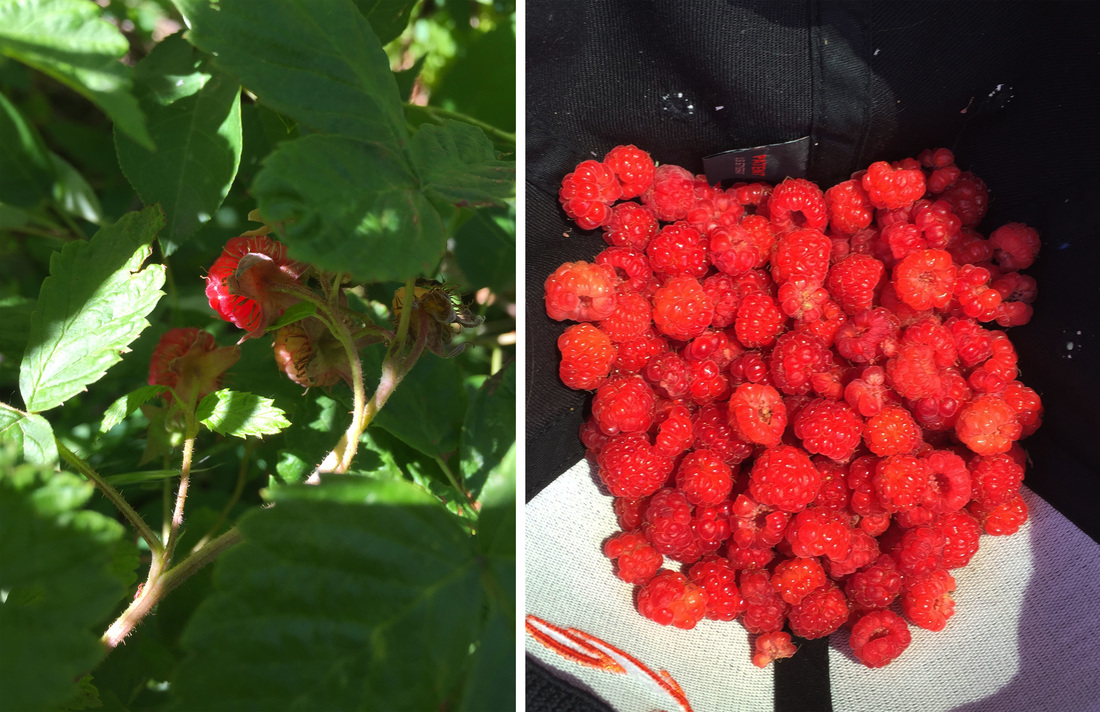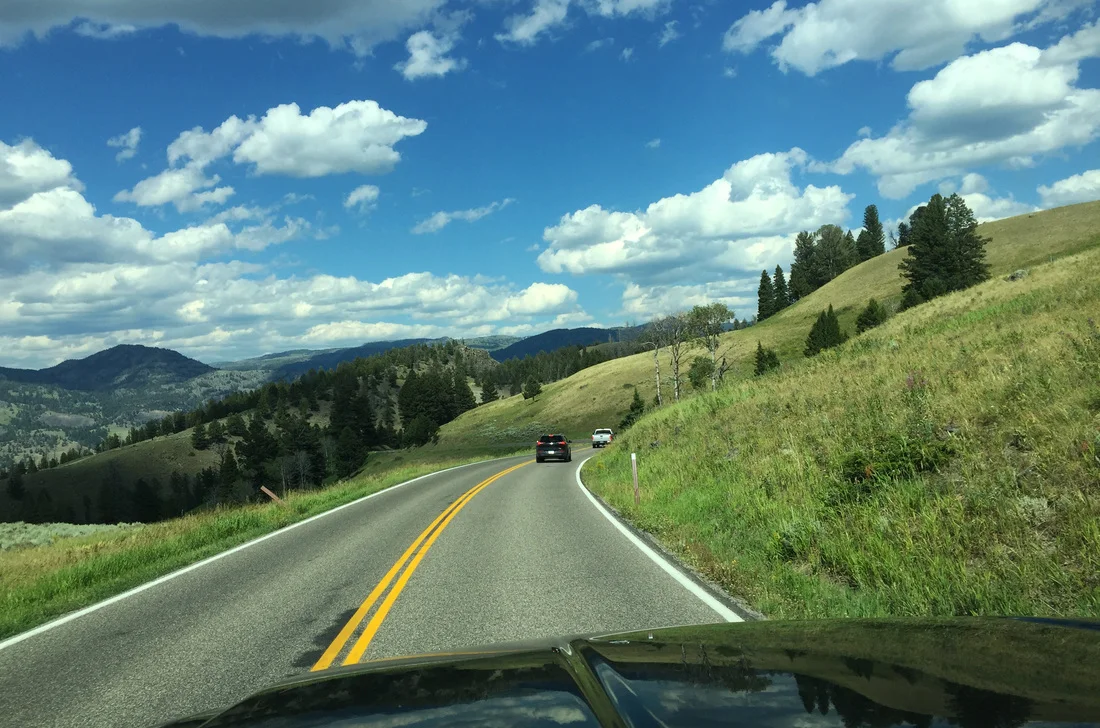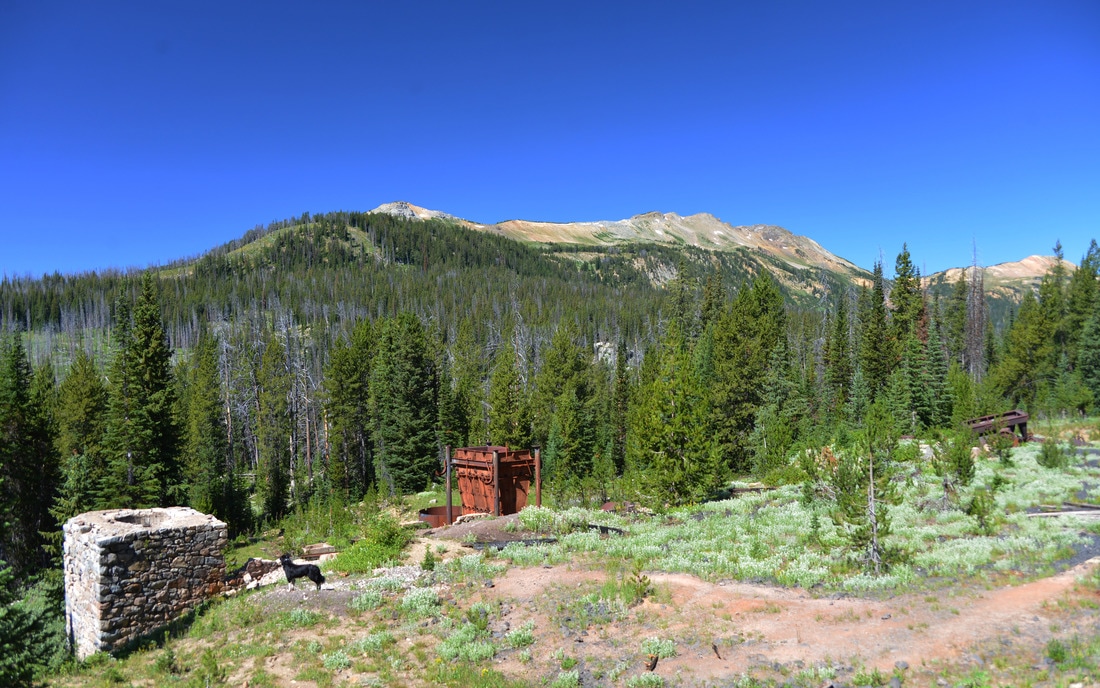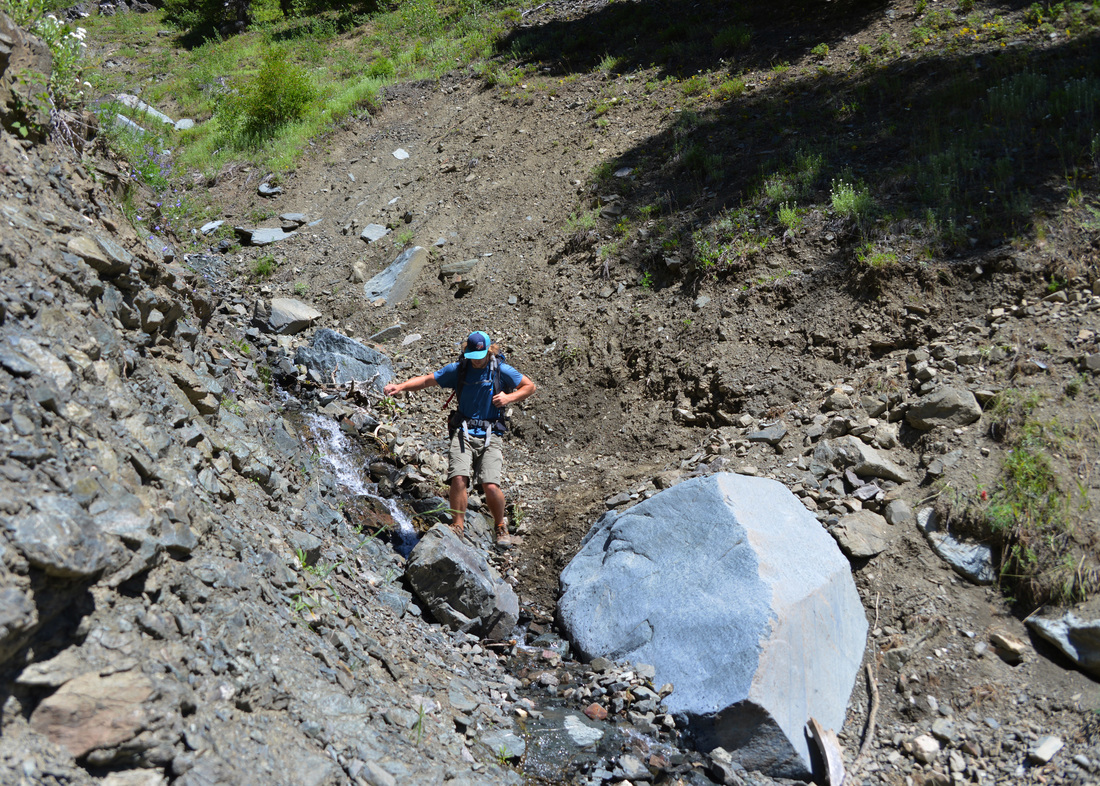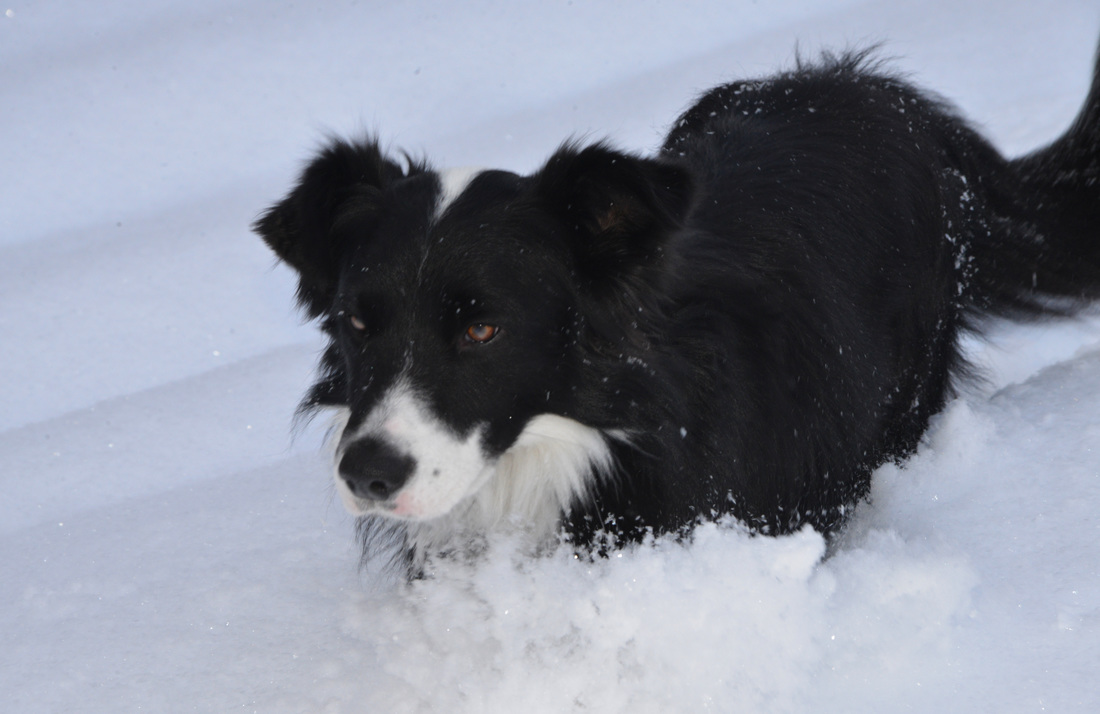Topping out at 12,807 ft at the top of Granite Peak and as home to the roughly 40 highest peaks in the state, the Beartooth Mountains are the undisputed roof of Montana. The towering peaks are composed primarily of Precambrian granite and metamorphic rocks dated to approximately 2.7 to 4 billion years old, making them among the old rocks on earth. The Beartooth range sits astride the Montana and Wyoming border to the North and East of Yellowstone National Park. The Beartooths make up the eastern half of the 900,000 acre Absaroka-Beartooth Wilderness and are largely devoid of roads other than a few dirt access roads winding into the larger canyons. The notable exception is the Beartooth Highway. US route 212 climbs gradually from the Northeast entrance of Yellowstone Park to the 10,947 ft top of Beartooth Pass before plunging precipitously into Red Lodge, Montana.
Carl, Ashley and I had been talking about venturing into the Beartooth Mountains all summer. I had driven the highway many times but had explored little of the canyons around Cooke City and Red Lodge, and neither of my two companions had even driven the highway. A first attempt at the trip fell prey to time constraints, lack of planning, and serious lack of commitment issues, but this time it was on. Carl was going down in the morning to hike with a friend in Yellowstone, but since Ashley had to finish up some work and I wouldn't be able to take Lex out hiking in the Park, the two of us would meet Carl at Roosevelt Lodge in the evening.
I met Ashley a little after noon and we loaded up the truck and headed east on the freeway. We had decided that a quick stretch of the legs was in order before we started the drive down to the park, so we took the Trail Creek exit and released the hound onto the trail of Chestnut Mountain. We enjoyed a nice relaxing hike up the mountain, soaking in the summer afternoon and the perfect weather before deciding it was time to hit the road. However, before we could reach the truck, our plans were derailed by the discovery of wild raspberries. Ashley spotted the first few berries peeking out of leaves right along the downhill side of the trail, and before we knew it we had worked our way into a massive thicket of the juicy red berries. While we had started popping them in our mouths as quickly as we picked them, it soon became apparent that the amount of berries we were encountering necessitated a more dedicated collection effort. About an hour after the discovery we were finally climbing back into the truck, fresh raspberries in the cooler, and working our way south towards Gardner. I had been expecting the worst at the Yellowstone entrance station, but we were pleasantly surprised by the lack of a line and we were soon cruising past the elk at Mammoth Village and rolling out of the hills into Tower Junction and Roosevelt Lodge. We found Carl enjoying a cold beverage on the lodge's front porch and joined him for some relaxation in the rocking chairs before heading into the lodge to rustle up some grub.
After filling up with burgers, fries, and tamales, we climbed back into the cars and hit the road to Cooke City. It was a perfect summer evening and we were joined by a coyote family and the usual herds of buffalo as we enjoyed the scenery of the Lamar Valley. Leaving the wildlife and tourists of Yellowstone in the rear view mirror, we passed through the quaint but touristy main streets of Silver Gate and Cooke City before finally reaching the Lulu Pass road, our planned camping area for the next couple nights. Good camp sites were at a premium but we soon found a nice secluded spot behind the creek and set up camp for the night. The fire ring was in a serious state of disrepair, but even the moderate swarm of mosquitoes and a light rain shower couldn't dampen our efforts and the fire ring was soon repaired and filled with a roaring camp fire. S'mores and Smookies (a s'more with cookies instead of gram crackers, of course) were produced, and we finally crawled into the sleeping bags, ready for a good nights sleep and the coming day of adventure.
After a good night's sleep, we awoke to sunny skies and gorgeous scenery. The cool mountain air was invigorating as we ate breakfast and pilled into the Raven, leaving Carl's car to guard our campsite. The first stop of the day was an old mining area just up the Lulu Pass road that I had found while conducting some Google Earth surveillance. We pulled off into a spur road and parked the truck at the remnants of an old building. The towering bones of a stone fireplace and chimney stood watch over the skeletal remains of the old foundation and cellar. While only a few ruins remained, it was clear that this had been a grand building in its day. We poked through the rubble and explored the nearby twisted remains of metal track before working our way further down the dirt trail. Reaching the end of the road, we found ourselves at a small trail head surrounded by derelict mining equipment, ramshackle cabins, and bullet hole riddled cars and machinery. Two old cabins and discarded mining equipment in various states of disrepair were explored before walking down the hill into what had obviously been the main processing and milling area. Rusted shells of equipment lay at rakish angles amongst the stone foundations of furnaces and buildings. A massive hamper of some sort stuck out proudly from the discarded pipes, gears, and other forgotten machinery. A large flattened bench dotted with footings appeared to outline the extent of one of the processing facilities. Wondering about the people that built these workings and mined the hillsides, we clambered over the stone benches and explored the old wreckage while Lex performed the obligatory sniff test on all the pertinent objects under investigation.
After satiating some of our curiosity, we hiked back to the road, loaded into the truck, and set out for Lulu Pass. The road wound its way higher into the mountains past more relics of the bygone mining days and the run down cabins of the men who called these places home. The road deteriorated as we climbed towards the pass, but the Raven was easily up to the task and only a couple of exploratory stops delayed our arrival on Lulu Pass. We soaked in the stunning views from the pass; the craggy summits of Pilot and Index peaks sticking out from the ridge line to the south and the towering hulks of the high points around Montana's tallest peak, Granite Peak, to the east, all bathed in the mid day sun. Such a breathtaking vista called for extended enjoyment, so we settled into a pullout on the flanks of Fisher Peaks and dived into sandwiches and snacks on the tailgate.
"Hey, its a beautiful morning, why aren't you getting up yet?"
With the remains of our lunches stowed back into the coolers, we set off for a little walk up to the top of Fisher Mountain. Fisher Mountain tops out at 10,260 ft, but is only a short hike from our lunch spot at the top of Lulu Pass. We clambered up through a steep, lush meadow of alpine wildflowers before reaching a rough 4-wheeler track coming up from the other side of the peak and crested the top of the mountain. Lex seemed to enjoy the breathtaking views just as much as the rest of us, and we took a few minutes to relax and enjoy the scenery. However, we had more terrain to explore, so we reluctantly left the top of Fisher Mountain, worked our way back to the Raven, and started to work our way around the backside of Fisher Mountain and into the old mine on the south west side of the peak.
The Daisy Pass area is part of the New World Mining District. Historic activity in this district included gold, silver, lea, zinc, and copper mining. Several hard rock mines were developed on Henderson Mountain in the late 1870's, but they were not extensively worked until the late 1880's. Much of the mining activity in the district was centered on Republic Mountain, South of Cooke City, and Miller Mountain, North of Cooke City. The first recorded discovery in the district was by four prospectors and trappers on upper Soda Butte Creek in 1869. However, their horses were run off by Indians and their expedition was cut short. Several mines were discovered and staked in a return expedition in 1874, and claims on both Republic and Miller Mountains were established the following summer. Steady mining development of the district began in 1882. The Homestake Claim was filed by Sam Mathers on the slope of Henderson Mountain and by 1887 it had produced enough gold and ore to ship to Salt Lake City for processing. The Homestake claim proved to be rich and was mined extensively until 1894. The Montana Mining Company acquired nearly one hundred claims Northeast of Cooke City in the early 1900's including properties on Henderson Mountain and Scotch Bonnet Mountain which lie on either side of Fisher Mountain. By the winter of 1921, six companies were at work in the district and were producing enough ore to raise the possibility of a railroad to Cooke City. However, the railroad never materialized, and the mines began to shut down in the mid 1920's.
The New World mining district produced 65,000 ounces of gold, approximately 500,000 ounces of silver, and about 4,100 short tons of copper, zinc, and lead between 1900 and 1955. While remote and isolated, the region was the third largest producer of precious metals in Montana in 1926. In the end, the district was doomed by the lack of and expense of transportation and the harsh winters. We spent some time wandering a couple of the old mining roads and new trail heads while taking in the mountain scenery. Scars of the bygone mining era were plainly visible all around us, and we pondered over the history that these mountainsides must have witnessed while we worked our way back to the main road and Daisy Pass. Upon cresting the summit we parked the truck and explored the pass on foot. Though it was late into the summer, a snow bank lingered on the east flank of the pass above the truck. The opportunity was to good to pass up, and Lex, Carl and I were soon found ourselves glissading down the snow field.
Leaving Daisy Pass in the rear view mirror we started the descent down the South side of the pass back into the valley and Cooke City. Numerous side roads leading off into the unknown tantalized us, but the day was running short and exploration of these tracks would have to wait till another day. We stuck to dirt back roads and avoided the highway all the way back to the Lulu pass road and were soon climbing back towards camp. However, we just couldn't make ourselves call it a day quite yet, so we set off for a little more exploration and turned off on a rough side road climbing up the Southeast side of Henderson Mountain. The road treated us to more breathtaking views of Pilot and Index peaks as it switchbacked up the side of the mountain. Knowing the road didn't go much further, we parked the truck in a high meadow below Henderson Mountain and set off on foot up a four wheeler trail that climbed towards the ridge line. After soaking in the afternoon sun and checking out a rescue gear cash, we worked our way back to the truck and returned to camp. We soon had the campfire crackling back to life and proceeded to whip up some steak sandwiches and potatoes and peppers cooked in foil over the coals for dinner. Sunset turned to starlight as we relaxed around the campfire before finally crawling into the sleeping bags to rest up for one more day of adventure.
Monday morning dawned crisp and clear, perfect weather to head higher into the mountains towards the top of the Beartooth Pass. After fueling up for the day with breakfast, we packed up the cars and worked our way back down the Lulu Pass road to the highway were we turned the trucks east. The highway slowly wound its way through forests, wet meadows, waterfalls, and lakes as it gradually climbed higher into the alpine. Soon the signs for the Clay Butte fire lookout appeared on the side of the road. On a whim, we followed their directions and turned off the highway back onto a dirt side road. Unfortunately it turned out that the road and fire lookout were closed on Mondays, so we parked the truck at the closed gate and set out towards the lookout on foot.
The Clay Butte Lookout was completed by the Forest Service in 1943 and is listed on the National Register of Historic Places. From its windows the rangers had a stunning 270+ degree view across the valleys of Montana and Wyoming stretching out into the distance. It is a life that has always intrigued me, and the thought of spending a summer scanning the horizon for signs of fires from your own lookout is always fascinating. We spent some time taking in the views and as much of the lookout tower as we could access before heading back to the cars and resuming our journey up the highway. Not long after leaving the lookout we passed Beartooth lake, Top of the World Lodge, Island Lake, and started to work our way into true alpine landscapes. The switchbacks in the road became tighter and more frequent the higher we climbed, and before long we were nearing the pass. We stopped in a pullout along one of the upper switchbacks and set off on foot up into the alpine tundra. More stunning scenery was the reward for our efforts, and we spent some time enjoying the views while Lex played in the snowbanks before heading back to the cars and up to the Beartooth Pass.
The Beartooth Pass parking area was filled with tourists enjoying the views, but we easily found a place to park and a nice soft piece of tundra to relax on over lunch. We lounged back into the soft hummocks of vegetation as we enjoyed the afternoon sun and our sandwiches. All too soon it was time to keep moving, so we reluctantly packed up the truck and hit the road again. Finally reaching Red Lodge, we celebrated the completion of the trip with some refreshing Ice Cream along the Main Street of town before parting ways and heading for home. It was a great trip filled with amazing scenery, weather, and company. It was wonderful to explore some of the areas that I have driven by for so many years, and the trip whetted our appetite for further adventure in the Beartooths!


